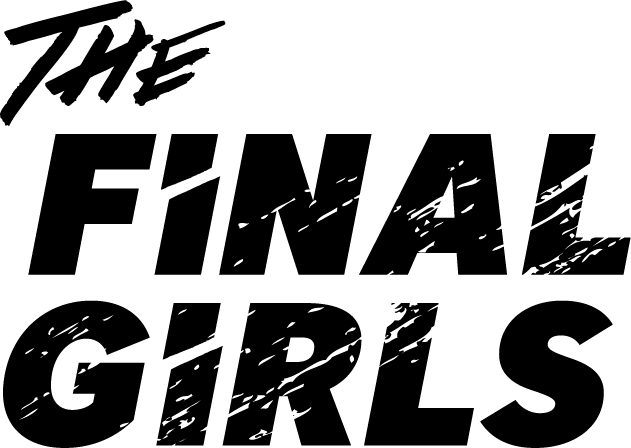#Horror – Intergenerational Female Experience and the Bottomless Pit of Online Trauma
By Kirsty Asher
“ Death is Trending”
There is a real urgency driving the film #Horror. Written and directed by conceptual artist Tara Subkoff after hearing about her daughter’s friend’s trouble with cyberbullying, it feels like the cinematic realisation of a mother’s primal urge to protect her child from online danger.
It also reads, at times, like a meditation on a generational shift. The generational divide between child and parent, ever since teen culture first started to be fully represented and celebrated in films from the 1950s onwards, reveals a social understanding of ‘coolness’ as something that keeps teenagers eternally sceptical of their parents’ attempts to connect with their interests. But the fast-paced transitions of internet culture, fads and memes take shape as esotericism that creates a far more drastic chasm between parent and child than a bedroom door huffily slammed shut.
Not that long ago (or so it feels to me), Subkoff and cast member Chloë Sevigny were the “it-girls” of their era. But here, in 2015, Sevigny and fellow face of late-‘90s youth cinema Natasha Lyonne portray mothers who are baffled by their daughters’ lives. Their casting alone is a yard stick with which to measure and evaluate the cultural shift. This shift is best highlighted in how Sevigny moves from countercultural icon to her role in #Horror, as a doomed cliché of the scorned and overlooked wife. She even angrily calls her husband in the opening scene to ask why he isn’t home for their anniversary, while he is inevitably in flagrante with a younger woman. Humiliated and abandoned in white lingerie, heels, and red lipstick, she has been pigeonholed into a role that so many women, in both reality and fictional narrative have reluctantly played. Though these tropes are well tread, storylines involving teenage girls and this type of technology are constantly metamorphosing, and utterly terrifying.
#Horror is part of the April 2019 programme at the BFI Raised by the Internet, curated to commemorate the Internet turning 30 this year. As a twenty-five-year-old woman, it’s impossible for me to ignore how profoundly present the Internet has been throughout my life, and how much more pervasive it’s becoming in the lives of younger generations, thanks to smart phones. Several films over the past decade have explored the idea of how cyberbullying and the supernatural can converge in the horror genre - the Unfriended horror franchise is a recent example of a cyberbullying/slasher revenge combination, but #Horror also reminded me of the British cyber-slasher horror Tormented (2009), with its saturated internet visuals and gaudy, cartoonish emoticons (the precursor to emojis that were popular on MSN Messenger in the early 2000s).
#Horror’s visual interpretation of a dangerous online game that is connected to the girls’ obsession with their smartphones is very similar to the visuals in Tormented where creepy smileys in acid yellow and the bright, cyberpunk colours of a pseudo-Candy Crush game explode across the screen as the girls interact with their phones, along with hashtagged words and phrases appearing in either sleek chrome gunmetal, or glutinous blood red. The sound design works to portray these internet visuals as violent and threatening, too; each cutaway is heralded by the sound of slicing, hacking and clicking – money, guns and knives all at once. The aural impact of typing out messages is an unrelenting sucker punch, as if every word is violence itself. It’s sensory overload in the most overt and bombastic sense.
But isn’t the reality often more neutered, more sterile? To me, the fear attributed to social media is the sudden buzz of a phone notification in an otherwise silent room that floods your stomach with dread after sending a carefully worded message. It’s the blank spaces between the blinking of the text cursor, like a metronome counting you down to your tentative reply. It’s the silent gnawing chasm of anxiety that opens as you wait for the incoming message as the typing dots appear, then stop, appear again, and stop …
Subkoff says she asked her daughter's friend "What is horror, to you?" but I don’t believe this is a modern teenager’s idea of horror. For me, this is a raw and unflinching characterisation of a modern-day mother’s fear for her child’s safety. It doesn’t so much represent the accuracy of adolescent behaviour or of Internet content as it is a brutal visualisation of how a mother might perceive the entity that her daughter has been sucked into, and which is visually realised in the film’s final scene: a bottomless pit of invasive advertising, emojis, hysterical news headlines, social media posts, fake aspirations and the overwhelming feeling that none of it is ever enough.
Kirsty Asher is a freelance critic who has written for MUBI Notebook, The Quietus and Into The Fold. She is a fan of David Fincher and laughing at weird things on the internet, and currently works as a documentary researcher.
Twitter: @Cursed__Tea
Letterboxd: letterboxd.com/kasher


